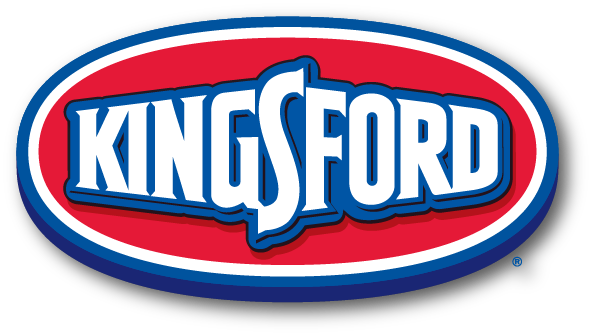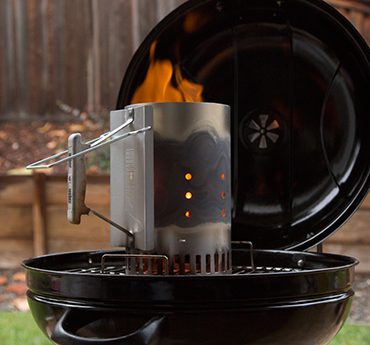- Cut:Brisket
- When it's Done:91°C
Along with ribs and pork shoulder, brisket is one of the Big Three of classic BBQ meats. “Low and slow” is the golden rule here — a low cooking temperature and a slow cooking speed. But have no fear: The art of smoking a brisket is as easy as painting by the numbers if you follow our simple steps using Kingsford® Charcoal.
-
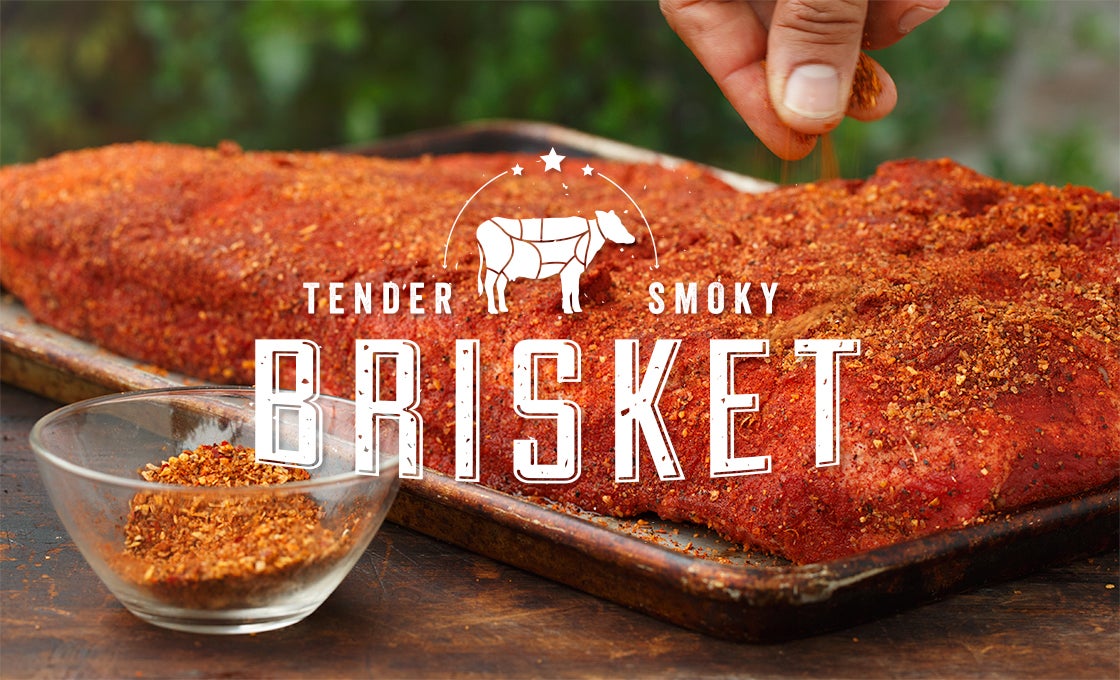
1Prepping the brisket
Start with a brisket in the 10- to 12-pound range, which is just the right size to fit on the grill. Trim off the excess top fat or “fat cap,” but leave a ¼"-thick layer of fat to keep the meat moist during the long cooking process. Sprinkle on a few tablespoons of rub, spreading it evenly on both sides of the brisket. Cook immediately if you’d like, or let it sit for several hours in the refrigerator to allow the rub to penetrate the meat. -
2
Prepping your cooker for smoking
If you’re using a kettle-type grill, use an indirect technique like the snake method to set up your grill. Be sure to use a drip pan with water directly underneath the meat to stabilize the temperature. For backyard smokers, set it up for a long smoke. Learn more about smoking here. With either method, soak a few handfuls of Kingsford® Wood Chips (hickory or mesquite) or large wood chunks for about 30 minutes in warm water before placing atop the coals. -
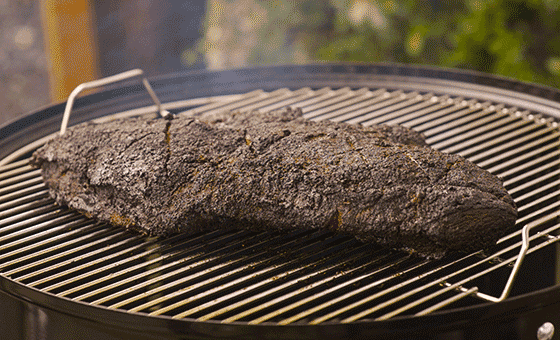
3Smoking the brisket
Place the brisket fat side up on the top rack, cover with the lid and bring the temperature up to 107°C, using the vents to regulate the temperature. Knowing the temp in your grill is crucial, so if your grill doesn’t have a temperature gauge, purchase a digital BBQ thermometer. -
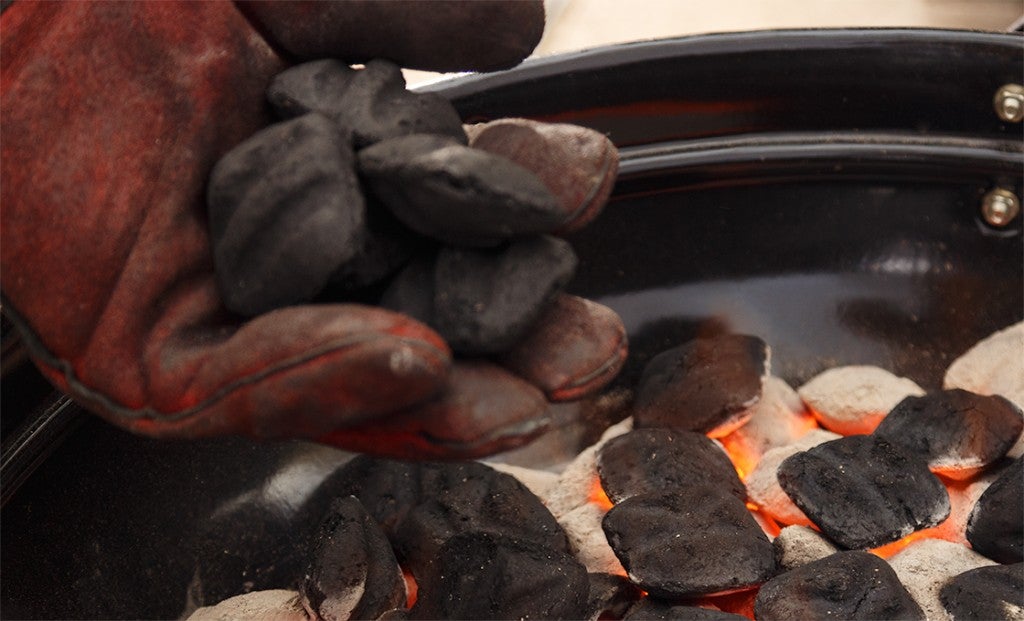
4Low and slow
Check the temperature of the grill every hour, staying as close to 107°C as possible. Resist the temptation to open the lid unless you need to add more charcoal or soaked wood chips to maintain temperature and smoke. -
5
Mind the stall.
When the brisket’s internal temperature reaches about 66°C, the brisket’s surface evaporation causes the meat’s internal temperature to plateau. Pitmasters call this “the stall.” Don’t panic. Either wait out the stall, or wrap the brisket tightly in two sheets of heavy aluminum foil with 1/2 a cup of apple juice added (aka The Texas Crutch) and bring the grill temperature back up to 107°C. -
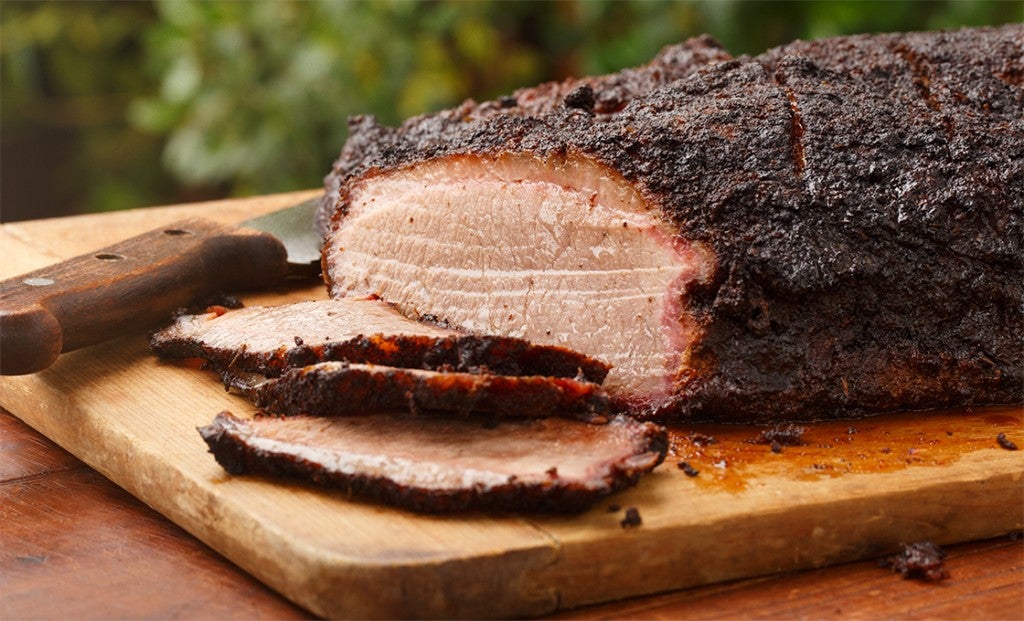
6Test for doneness.
The ideal temperature of a properly smoked brisket is 91°C, but keep in mind that the internal temp of the brisket can increase by 10 degrees even after it’s been removed from the grill. The last thing you want is to overcook your brisket, which results in dry, chewy meat. Another way of testing brisket for doneness is the “feel” method: Stick a small fork in the brisket, and if it twists easily in the meat, it’s done.

There’s a whole universe of rubs out there that you can choose from. Here are a few of our favorite rubs.
Learn more
A competition trick is to first apply some olive oil or yellow mustard to the raw brisket to allow the rub to stick better (the mustard disappears as the meat cooks).

Smoked brisket leftovers are great in tacos, enchiladas, salads, or even this Greek-inspired pita sandwich.
Learn more